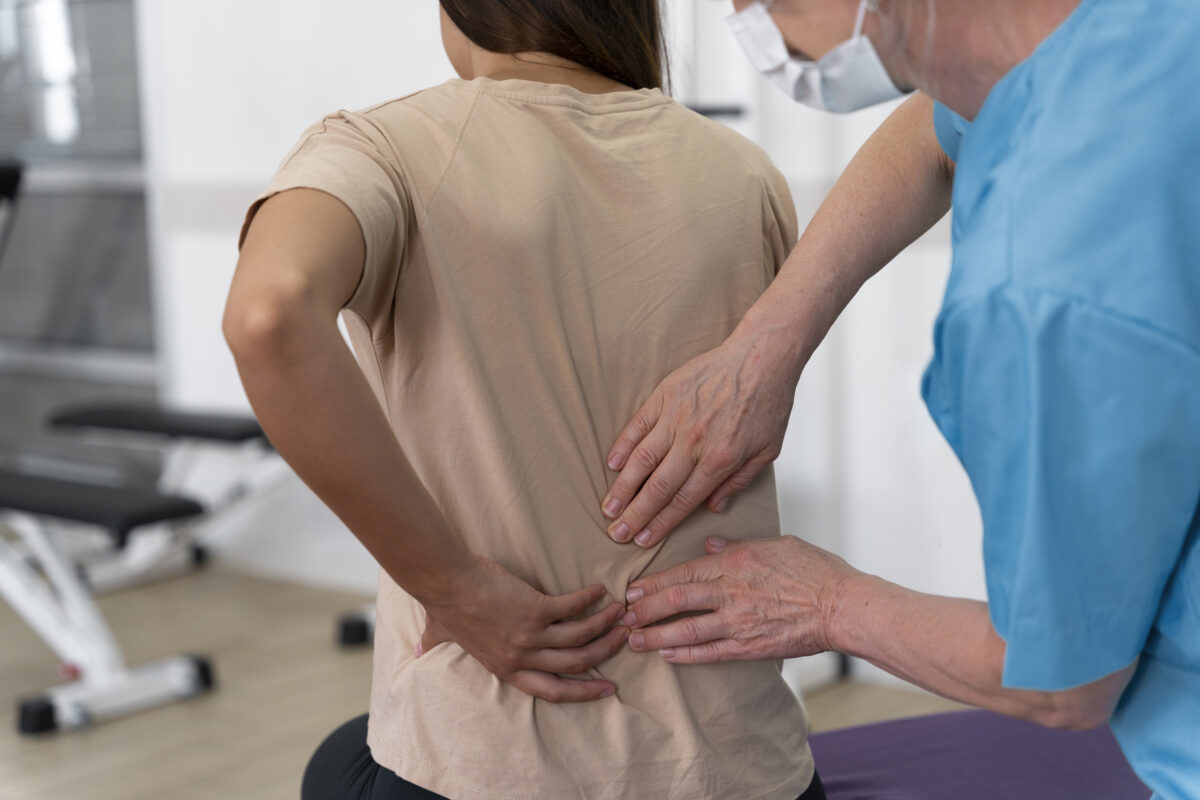Kidney pain and lower back pain are two distinct but often confused medical conditions that arise from different anatomical origins and have unique presentations and underlying causes. Kidney pain, typically felt in the flank region, may stem from issues such as:
- Kidney stones
- Urinary tract infections
- Kidney infections
This pain is often sharp and may come with changes in urination and systemic signs like fever.
In contrast, lower back pain is a widespread condition affecting the lumbosacral area and is frequently caused by musculoskeletal issues, such as:
- Muscle strains
- Disc problems
- Arthritis
It may present as stiffness, discomfort, or pain that radiates down the legs.
Why Understanding the Difference Matters
Understanding the difference between these two types of pain is essential for effective diagnosis and treatment. Each requires a different approach.
- Kidney pain may require medication or surgical intervention depending on the severity.
- Lower back pain is often treated with physical therapy, lifestyle changes, and medication. Surgery is only considered for chronic or severe cases
Both conditions can significantly impact an individual’s quality of life, making awareness and proper assessment essential for timely intervention. The overlapping symptoms and proximity of the kidneys and lower back complicate diagnosis, highlighting the need for healthcare professionals to conduct thorough evaluations, including patient history and diagnostic tests, to accurately differentiate between the two.
This understanding not only aids in reducing misdiagnosis but also emphasizes the importance of recognizing warning signs that warrant medical attention.
Differences in Pain Presentation
Pain in the lower back often presents as muscle stiffness, discomfort that improves with movement, or pain that may radiate to other areas.
In contrast, kidney pain typically manifests as a dull ache in the flank region and may be accompanied by symptoms like urinary issues or systemic signs of infection.
Understanding the anatomical differences and physiological roles of the back and kidneys is essential for accurate diagnosis and effective treatment of pain in these areas.
Common Causes
Kidney pain and lower back pain can arise from various underlying issues, some of which may overlap, but they generally have distinct causes. Understanding these causes is key to identifying the source of the pain and choosing the right treatment. It’s also important to note that lifestyle, posture, and general health can play a role in how and why these pains develop.
Recognizing the Symptoms: What to Watch For
Kidney pain and lower back pain can present with a range of symptoms that may sometimes overlap, making it challenging to differentiate between the two. Understanding the specific symptoms associated with each can help in identifying the underlying cause of the pain.
Diagnosis
Diagnosing kidney pain requires a comprehensive evaluation of symptoms and may involve various tests to determine the underlying cause. Initially, a patient experiencing pain in the kidney region is typically referred to a primary care doctor or a nephrologist, a specialist in kidney diseases
What to Expect During Your Initial Doctor Visit
During the initial consultation, the healthcare provider will conduct a detailed medical history and physical examination. They will inquire about the nature of the pain, including its location, intensity, and any accompanying symptoms such as fever, chills, or changes in urine.
Commonly reported symptoms that may indicate kidney involvement include blood in the urine, a burning sensation during urination, frequent urination, and nausea.
Medical Tests to Diagnose Kidney Problems
Several diagnostic tests can assist in identifying the source of kidney pain:
- Urine Tests: A urinalysis is often performed to check for signs of infection, blood, or abnormal substances in the urine. This may involve visual examination, dipstick tests, and microscopic analysis. In some cases, a urine albumin-creatinine ratio (uACR) or a 24-hour urine collection test may be ordered to assess kidney function more comprehensively.
- Blood Tests: Blood tests, including checking levels of urea nitrogen and creatinine, can provide insight into kidney function and help identify any infections or blockages. These tests are critical in determining how effectively the kidneys filter waste products from the blood.
- Imaging Tests: Imaging studies such as ultrasounds, CT scans, or MRIs may be utilized to visualize the kidneys and surrounding structures. An ultrasound can help identify obstructions like stones or tumors without the need for contrast dye, making it safer for those with existing kidney conditions. Conversely, a CT scan provides detailed images and may require intravenous contrast, which could pose risks for individuals with impaired kidney function.
- Biopsy: In specific cases where the cause of kidney pain is not clear, a biopsy may be necessary to assess kidney tissue directly.

When Should You See a Doctor?
Patients should seek medical attention if they experience:
- Constant or worsening kidney pain
- Fever or chills
- Blood in the urine
- Significant changes in urinary habits
Early diagnosis and treatment are crucial in preventing further complications
Treatment Options
When it comes to treating kidney pain and lower back pain, the approaches can vary significantly depending on the underlying causes and symptoms.
How Kidney Pain Is Treated
Treatment for kidney pain often depends on the specific cause, such as kidney stones or infections.
- Medications: For kidney stones, doctors may prescribe drugs to ease stone passage or manage pain. Larger stones may require surgical procedures.
- Pain Relief: NSAIDs like ibuprofen can relieve pain but must be used with caution, especially for those with chronic kidney issues.
- At-Home Care: Using a heating pad and staying hydrated are common home remedies for mild kidney discomfort.
It’s important to consult a healthcare provider to determine the safest and most effective treatment approach.
Treatment Options for Lower Back Pain
The treatment of lower back pain may include a combination of medications and physical therapies:
- Over-the-Counter Medications: Acetaminophen and NSAIDs help reduce inflammation and ease discomfort.
- Prescription Drugs: In more serious cases, stronger medications or even opioids may be prescribed, but these carry a risk of side effects and dependency.
- Therapeutic Approaches: Physical therapy, stretching, yoga, and massage are all commonly used. Research suggests combining these methods can be more effective than medication alone.
- Advanced Treatments: For chronic or unresponsive pain, injections or surgery may be considered as last-resort options.

